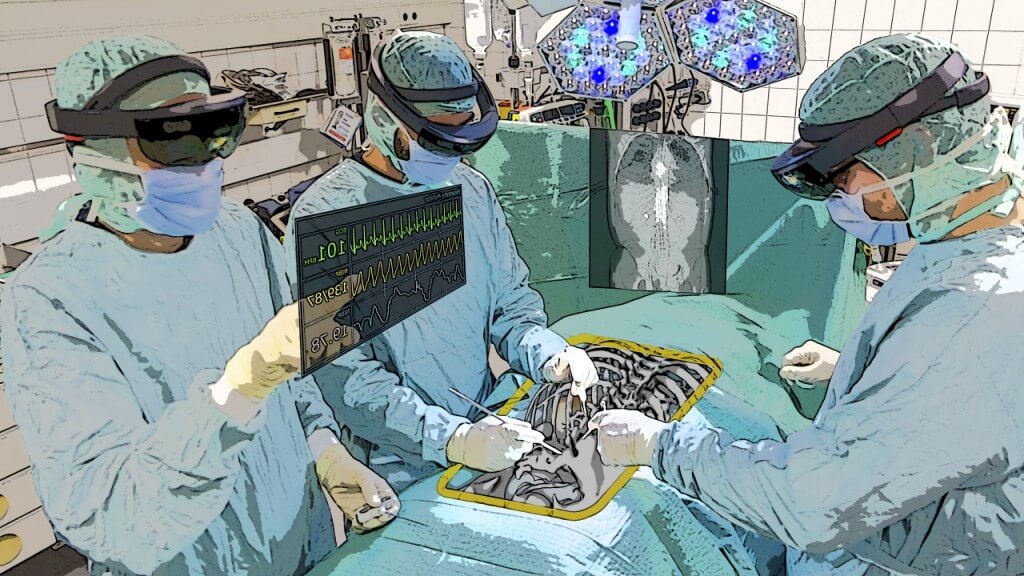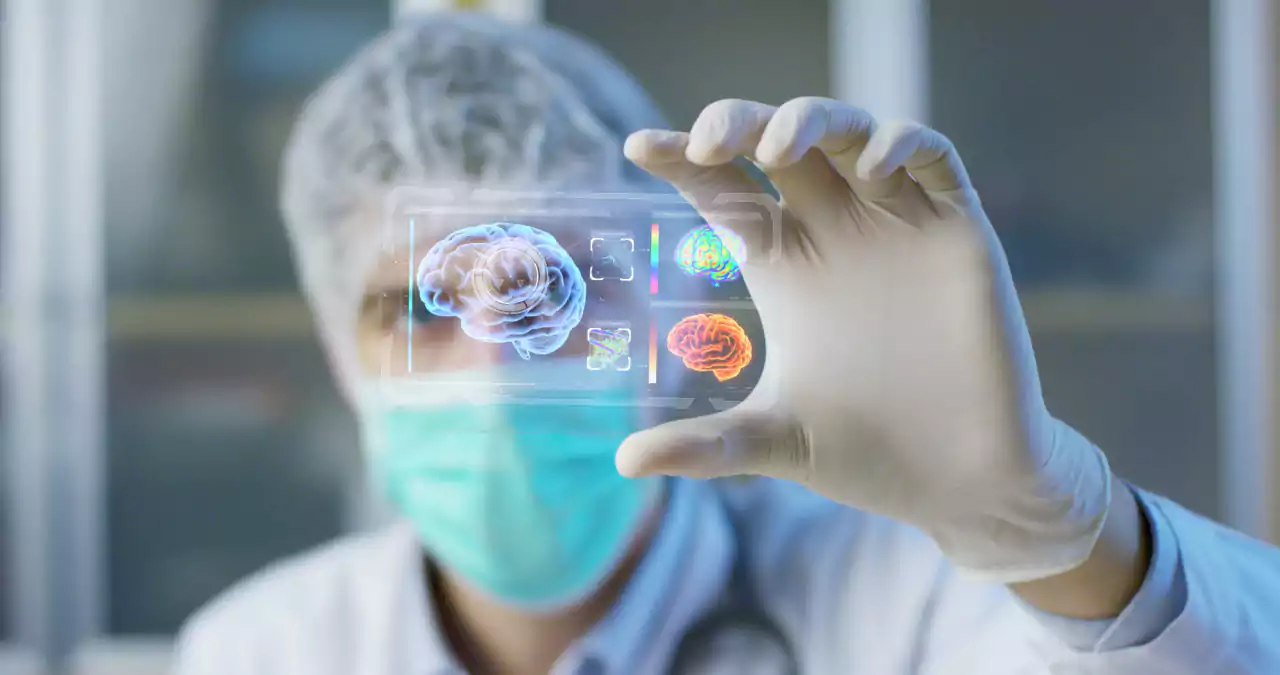Augmented Reality (AR) is a constantly growing field in computer science. Research efforts have been continually intensified and solutions have been developed for various domains such as entertainment, industry, art, communication, education, navigation, architecture and medicine. By extending the real world with virtual, computer generated information, the perception of natural environments can be enriched, and the surrounding world can be interactively manipulated. Especially in the medical field, advanced imaging technologies transformed the surgical practice in the last few decades which offers a whole new world of capabilities for the application of AR systems.

An intra-operative AR system concept. Illustration by Marc Lazarovici and Alexander Winkler
AR has the potential to revolutionize medicine. During surgery, AR systems provide medical imaging data and other patient information superimposed on the operation area in the most intuitive way. Furthermore, AR aided navigation systems can reduce the risk of complications and improve the safety and quality of surgeries, AR education systems train the surgeons of tomorrow to acquire the critical skills and AR rehabilitation concepts help patients to recover faster after interventions. However, while research is rapidly evolving in the field of Medical Augmented Reality, strong relationships between doctors, engineers and industry are the key for the development and implementation of new AR systems in medicine.
Our Chair for Computer Aided Medical Procedures (CAMP) at TU Munich and JHU Baltimore is one of the strongest and leading research centers for medical AR world-wide. For the last two decades, various AR systems have been developed and evaluated for a wide range of medical applications, including the world’s first AR-enabled C-arm. The CAMP chair possesses a comprehensive portfolio of AR related research projects, publications and live demonstrations at several high impact journals and international conferences. In cooperation with the HMZ Flagship Zurich we are bringing together surgery, imaging, computer science and engineering to develop, integrate, optimize and clinically validate state-of-the-art AR technologies to improve surgical capabilities and embed them in efficient and cost-effective clinical workflows for the benefit of the patient.

